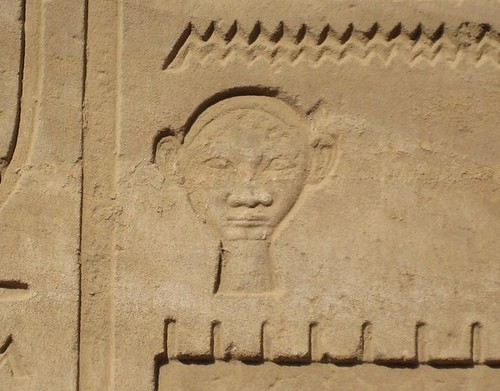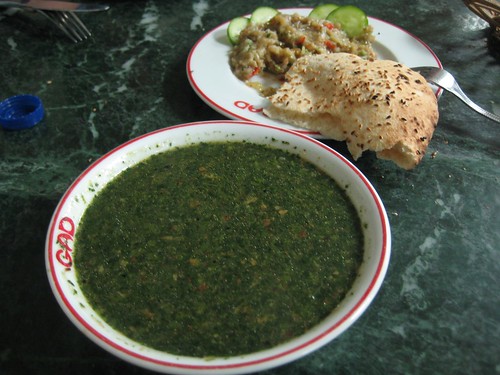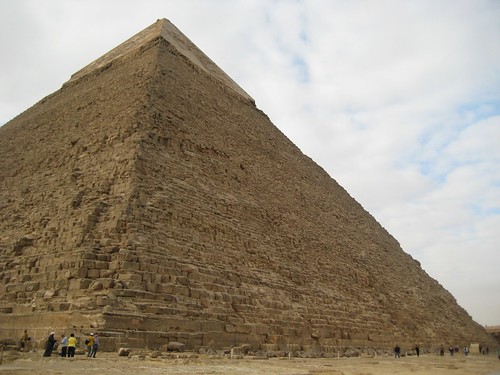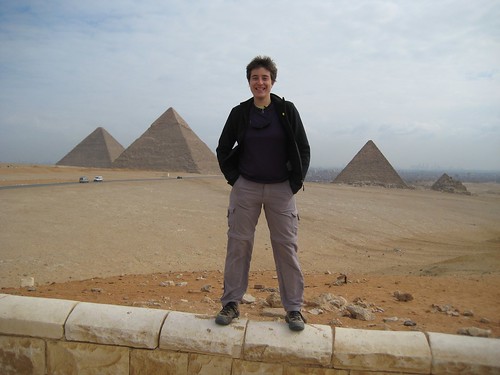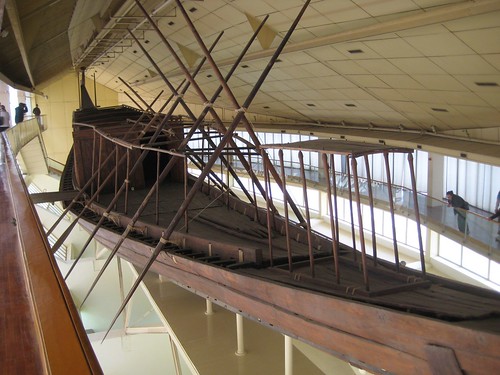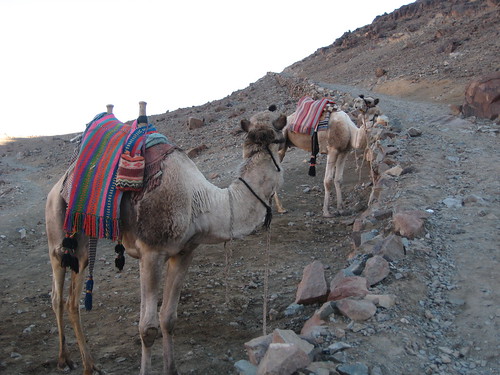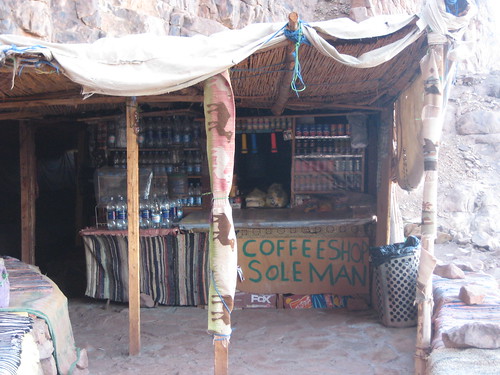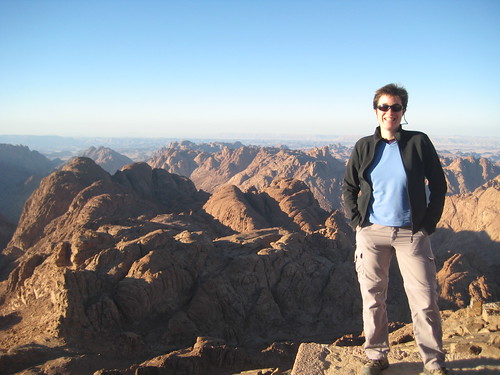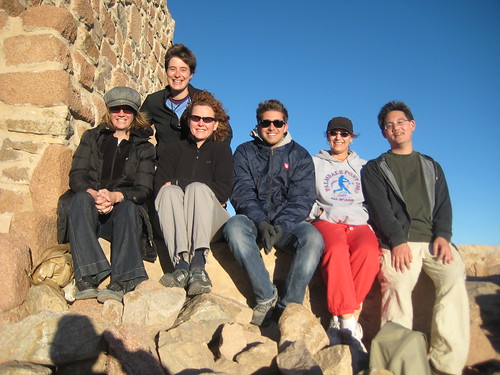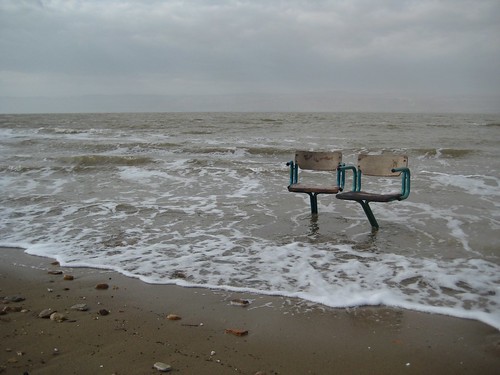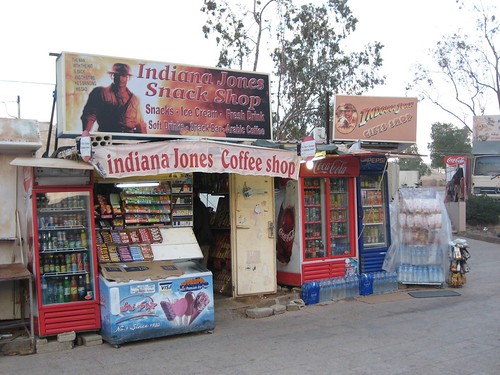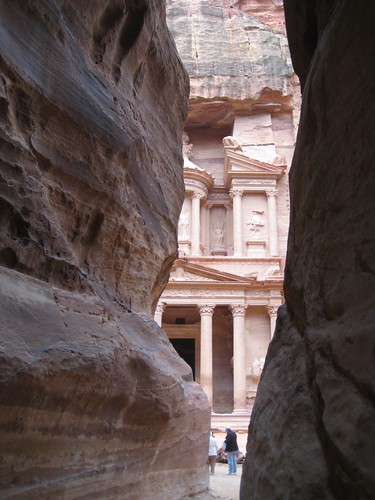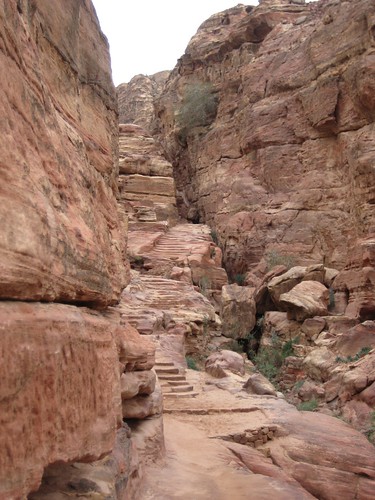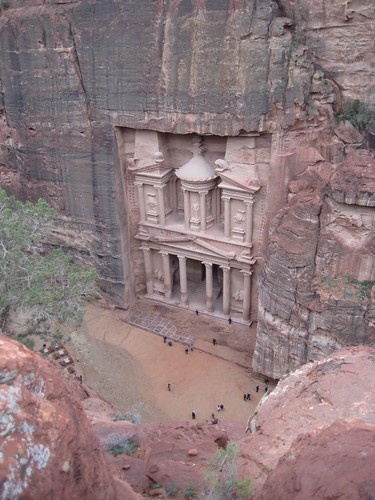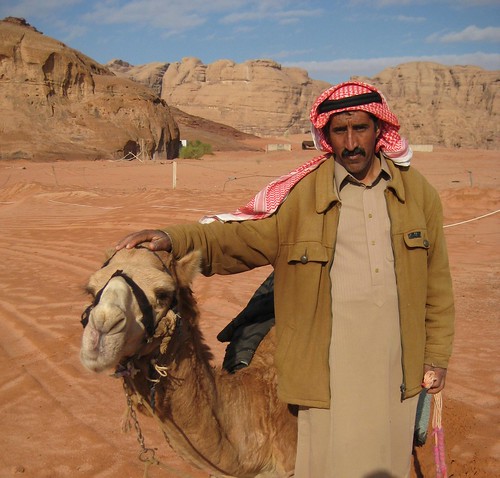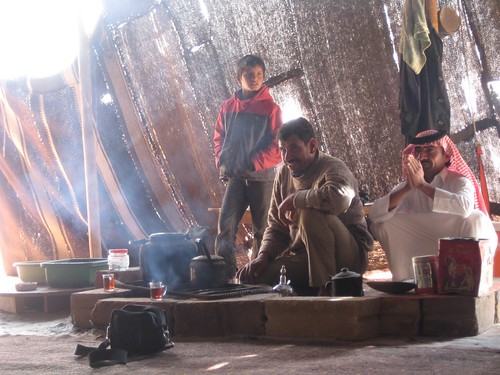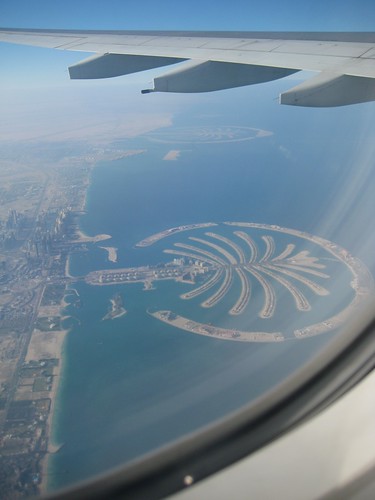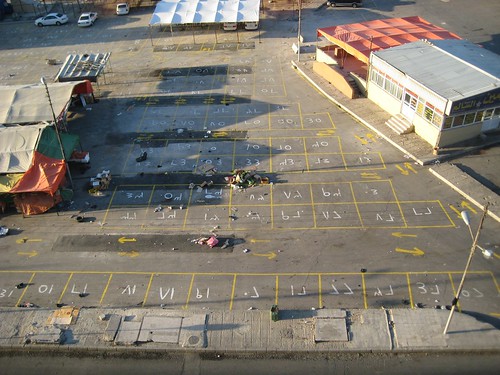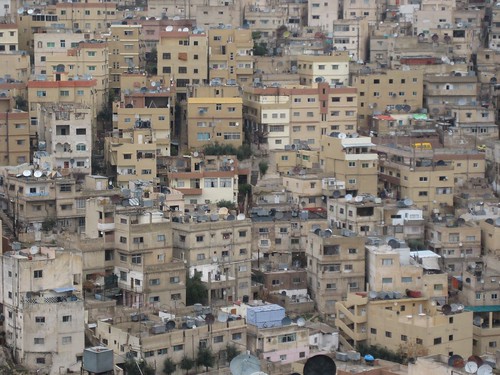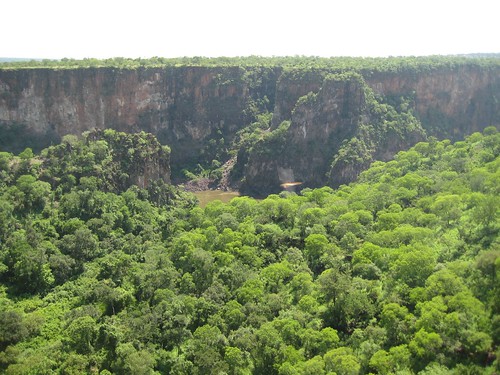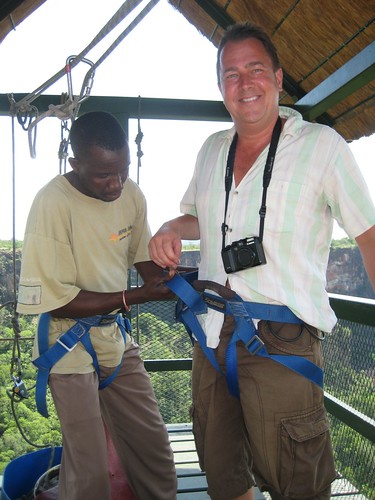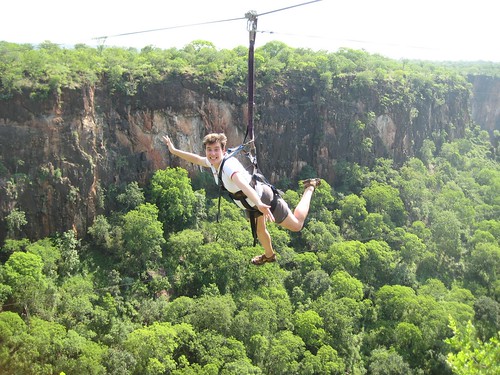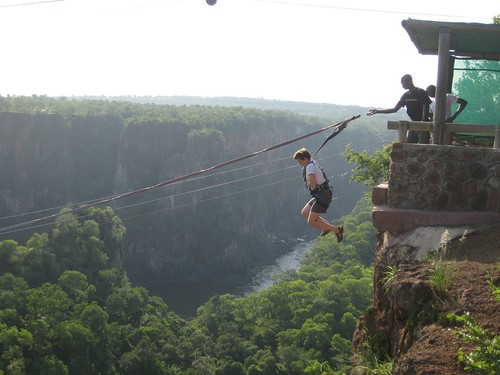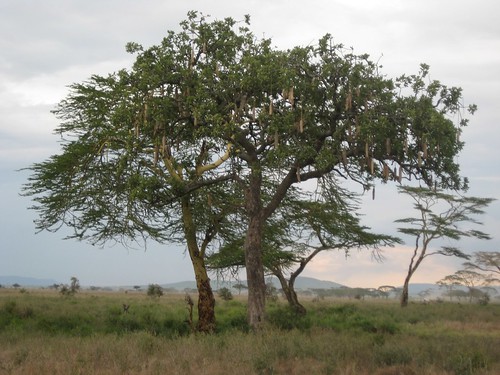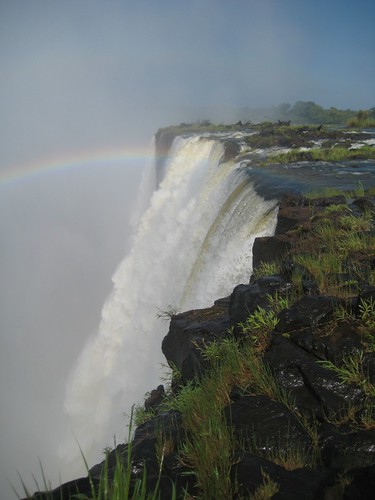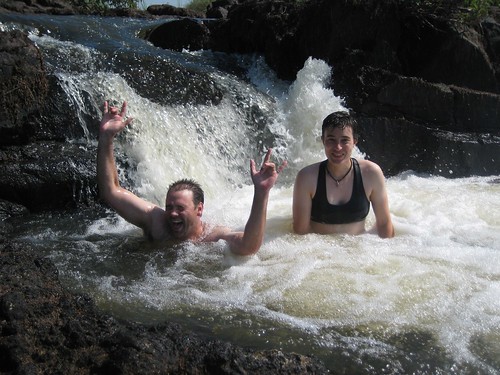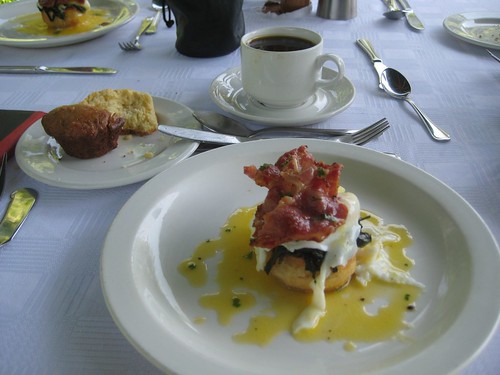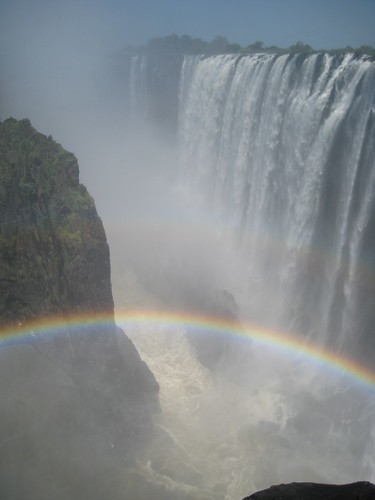Of course you remember that Upper Egypt refers to the south of the country, upstream of the Nile, but at the bottom of the map, so we kind of went down to upper Egypt. We made it to Luxor after a long and frigid overnight train journey that you already heard a little about. We arrived at the Tutotel (Get it? Tut… Hotel…), dropped our bags, and turned right around to head for one of the big sights in Luxor – the Temple of Karnak. And instead of simply getting on a bus and driving the 3.5km, we took horse-drawn carriages. There’s a lot of that kind of thing on this tour – horse-drawn carriages, donkey rides, nights in Bedouin camps, nights on board feluccas. This is going to sound terribly bitter and jaded, but sometimes it turns out that these are the kind of things that sound hopelessly romantic and exciting when contemplated in a glossy brochure from the comfort of an easy chair, but are quite another matter entirely after an overnight train ride on Day 11 of a relentless schedule (or, for that matter, Day 227 of a less relentless but still taxing overarching plan). Regardless, into the carriages we went, and arrived at Karnak a short time after.
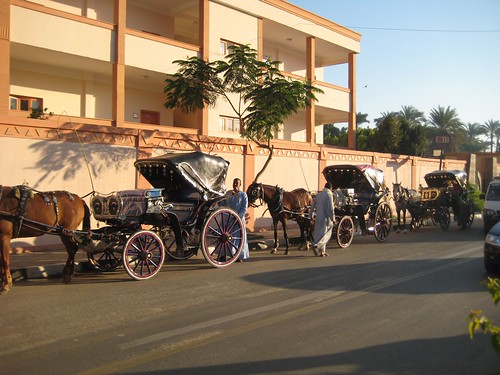 The carriages waiting for us outside the hotel
The carriages waiting for us outside the hotel
I was a bit frazzled and resentful that we didn’t have time for a nap or shower or anything before we were back on the job, but it turns out that the Temple of Karnak was great enough to dispel my crankiness (which has been more and more common these days, so you know it must have been pretty great). Part of what made it great was that we had a very good local guide for all our time in Luxor – Mr. Adil was apparently voted the best guide in Luxor at some point in the past, and I can understand why. He was amiable and funny and like to joke around (a bit too much for my tastes, but much more fun than the automaton guide we had in Cairo). However, he was also a serious scholar of Egyptology who had a lot of “common knowledge” kind of information and even shared some of his personal theories about the site, which were really... interesting. Some of them seemed a bit far-fetched, but he also admitted that he gets a lot of his ideas when he’s smoking sheesha, which he does a lot, so that may explain why his theories weren’t really mainstream.
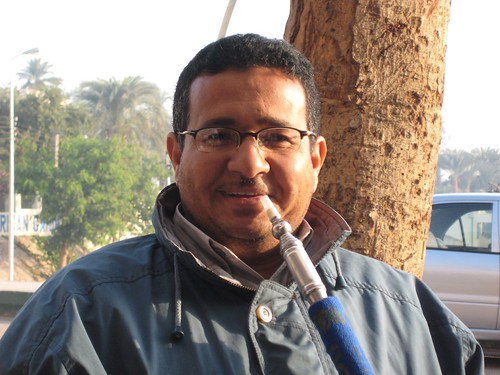 Mr. Adil, with his beloved sheesha
Mr. Adil, with his beloved sheesha
The temple itself is a huge site covering about 2 square kilometres and was built, enlarged and modified over about 1,500 years. It was once the most important place of worship in Egypt and contains, in the words of the LP, a “vast complex of temples, pylons, obelisks, and sanctuaries” and “is quite possibly the most incredible sight in all of Egypt". A strong claim, but Karnak did not disappoint.
Part of what made the site really interesting for me was that its construction was never actually completed. There were the remains of a mud brick ramp that had been used to get large stones up to the top of the main wall, and Adil showed us an area where there was an unfinished column at the end of a row of finished ones. I thought it was really interesting to see.
Undoubtedly, the best part of the Temple of Karnak is the great “Hypostyle Hall” (no idea why it’s called that… I wish I’d asked Adil.) It’s a huge room filled with massive columns – 63 on one side and 63 on the other, with 12 even bigger ones running down the middle corridor. Apparently it was originally roofed with huge slabs of stone, and the few pieces of roof that remain still have the bright painted decorations on them. It’s really impressive, and all the columns are carved with hieroglyphs, some of which Adil translated for us.
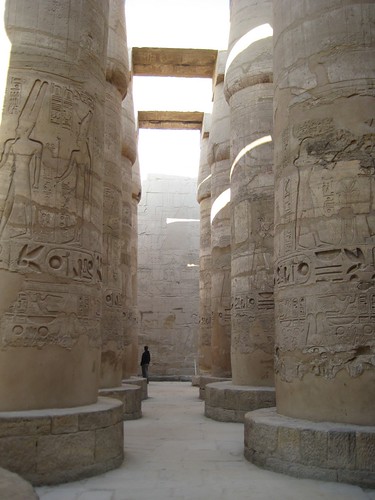 A view down one small section of the Hypostyle Hall, showing the huge columns.
A view down one small section of the Hypostyle Hall, showing the huge columns.
I got quite fond of hieroglyphs during my time in Luxor – they really are all over these ancient sites, and it’s fun when you start to be able to recognize some favourite characters, or see the royal names in their cartouches repeated over and over again. There are lots of different birds – an owl, a goose, a quail chick, and representations of feathers and circles and water. One of our favourite characters was a relatively rare one we started calling the “Barack Obama”. You can see why.
Adil was also very fond of pointing out the best places to stand to get good photos of the site, and even showed off a few tricks for getting interesting shots, including shooting through the lens of a pair of amber sunglasses to achieve a sort of interesting poor man’s sepia/sunset effect. And he demonstrated his famous “Obelisk of Queen Hatshepsut Reflected in Sunglasses” shot with me, and I think it’s actually kind of cool.
 The Obelisk of Queen Hatshepsut (pronounced like “HAT Ship Suit”) reflected in my sunglasses
The Obelisk of Queen Hatshepsut (pronounced like “HAT Ship Suit”) reflected in my sunglasses
We were finished at the Temple by around lunch time, and then it became clear that it may actually have been a good idea to get the temple finished with early on. It meant that we could then enjoy that rarest of creatures: a free afternoon. I wandered off with Fabio for a local falafel lunch, visited the “best bookstore in Egypt” (this according to Ahmed, though it really was disappointing, despite the excellent selection of used Danielle Steele paperbacks) and then hit the internet café. Then I had a nice long nap and after that I did something I haven’t done since I left Kampala – I ran. Not hiding away on a treadmill, not on a hash – just me out for a run in public like a normal person. Ahmed assured me that Luxor was very touristy and it would be no problem at all for me to appear in public brazenly displaying my bare knees, so off I went. I did 7km along the banks of the Nile and it was GREAT.
It was another early-ish start the next day for our donkey ride out to the Valley of Kings. Coincidentally it was also my 41st birthday, though the birthday portion of the day turned out to be pretty minor. My donkey, especially, seemed unimpressed by my Birthday Girl status. As for the donkey ride, it was another one of those things I mentioned above – like the horse-drawn carriages – that seems like a good idea, but ends up being fun for 15 minutes, then sort of uncomfortable, then tedious. The ride took over an hour, and a lot of it was on fairly busy streets where we were frequently passed by shiny air-conditioned buses on the way to the Valley.
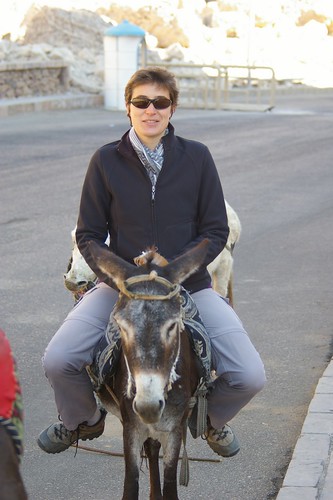 Yes, the donkey was small. They were all that size. I promise you, Kathryn, that my size relative to that of the donkey was not at all unusual.
Yes, the donkey was small. They were all that size. I promise you, Kathryn, that my size relative to that of the donkey was not at all unusual.
Once we finally arrived, after only one mishap involving donkey and rider parting company unexpectedly and with minor blood loss (not me), Mr Adil was there again to guide us around the site. No cameras are allowed anywhere in the Valley so I have no photos, but it turned out that the whole thing was just a bit disappointing. There are a total of 63 tombs hidden away in the Valley – from an era rather later than that of the pyramids, when kings started to realize that burying themselves and their treasures underneath massive monuments was a bit like erecting a huge billboard reading “Attention thieves: unimaginable riches contained within. Please Steal.” Everything is underground in the Valley, but of all the tombs known to be there only three are open to the public. Of course the most famous tomb at the site is that of King Tutankhamen, but we didn’t bother to go into that one. It costs an extra £100 (about $20), and we’d seen all the good stuff from inside it in the Egyptian Museum anyways. Even the LP admits that it is “far from the most interesting”.
What we did see were the tombs of three different Ramses (they might have been the 1st, 4th and 9th, but I lost my notes and really, do you care anyways?). The best part about them was the colourful paintings on the walls of the corridors and chambers. The walls were just covered with hieroglyphs and scenes of gods and goddesses, and there were some where the colours were just brilliant. It was hard to believe they’re as vibrant as they are considering their age. Still, it was getting hot, and the site was crowded, so as soon as we'd seen what we'd come to see, we moved on.
After the Valley of Kings we made a short pitstop at the Funerary Temple of Queen Hatshepsut (she of the obelisk-in-the-sunglasses). It’s a really impressive site not far from the Valley. My photos of the Temple are not great because I was taking them with my cell phone camera. What I didn’t mention about the donkey ride is that just as we were setting off my digital camera packed it in. The retracting lens decided to stop retracting and now the camera won’t do anything except try to retract the lens, fail, and then try again. There’s probably a tiny bit of Egypt stuck in the mechanism. I shouldn’t be surprised; that camera has been in constant use for seven months now, and as near as I can tell it took 7968 photos for me on this trip before calling it quits (and that’s not one of those made-up numbers that I stick in here for laughs – that really how many photos I’ve taken). I was gutted about this for a while, but then I realized that it was a good excuse to get a newer, better camera. My current plan is to check out a camera shop in Cairo, and to visit some of the really good electronics shops at the Dubai airport, where I’ve got a four and a half hour layover on Sunday night. Luckily I’m not camera-less. Fabio, the young Swiss guy in the group, and one of those people who has a serious camera, also has a small Canon point-and-shoot camera as a backup. It’s actually much nicer than mine, and he lent it to me for the rest of the tour. I’m enjoying playing with it and contemplating my future new camera, a birthday present for myself.
But back to the Temple of Queen Hatshepsut. It’s a three-level structure faced with columns that used to be fronted by big statues. Most of the statues are gone now, but it’s still striking. (As was Queen Hatshepsut herself – she was the first woman to rule Egypt as a king in her own right, not merely the consort of a king. She wore the famous double crown of Upper and Lower Egypt and was apparently pretty bad-ass until she was succeeded by her son Thutmosis III who defaced a lot of her temples and stuff because he was pissed off that she’d taken over things when he was just a kid.) I thought the whole site looked a bit like a Las Vegas hotel from afar because it actually looks amazingly clean and modern.
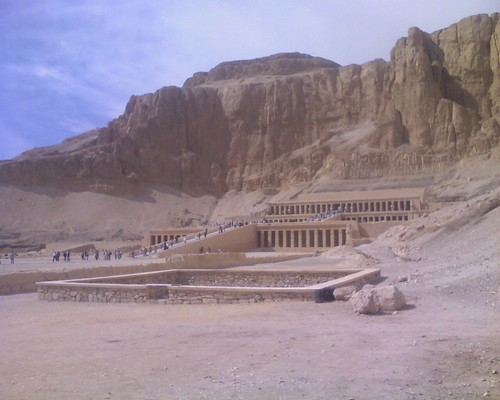 The temple, viewed from afar. I can just picture a giant restaurant terrace with an all-you-can-eat buffet of shrimp cocktail on that lower level, and banks of slot machines on levels two and three. Perhaps I've been at this too long...
The temple, viewed from afar. I can just picture a giant restaurant terrace with an all-you-can-eat buffet of shrimp cocktail on that lower level, and banks of slot machines on levels two and three. Perhaps I've been at this too long...
After our short stop at Hatshepsut’s place, it was back on the bus and back into Luxor. We had a bit of time to sort out our luggage and then it was on to Aswan and more big sights. However the hour is late and my brain is tired, so I think I will save the story of Uppermost Egypt for another post.


